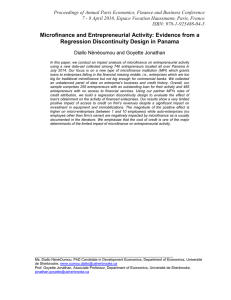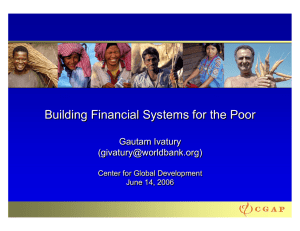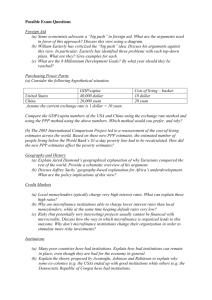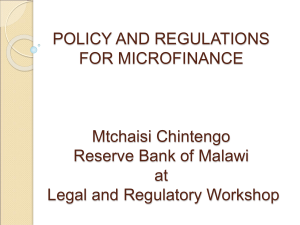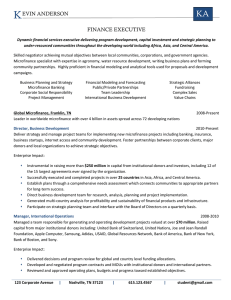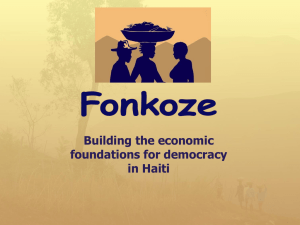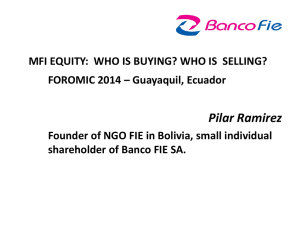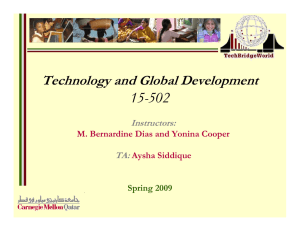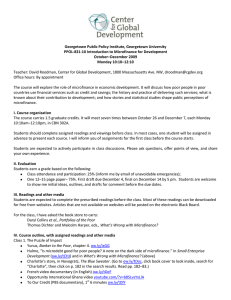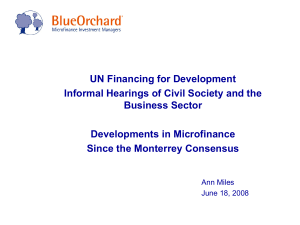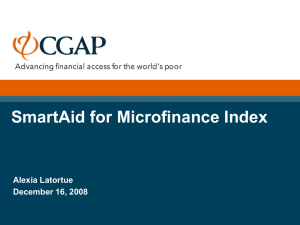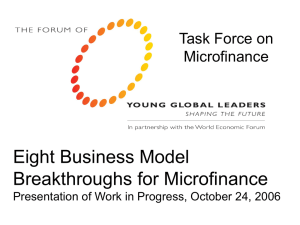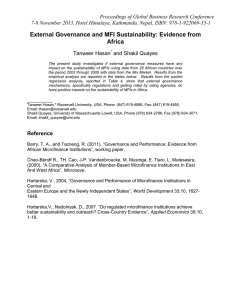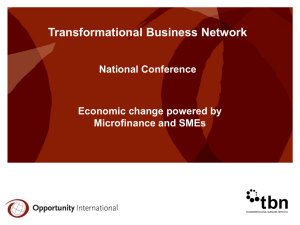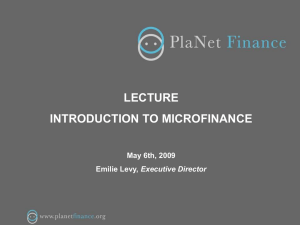modèle de cahier
advertisement
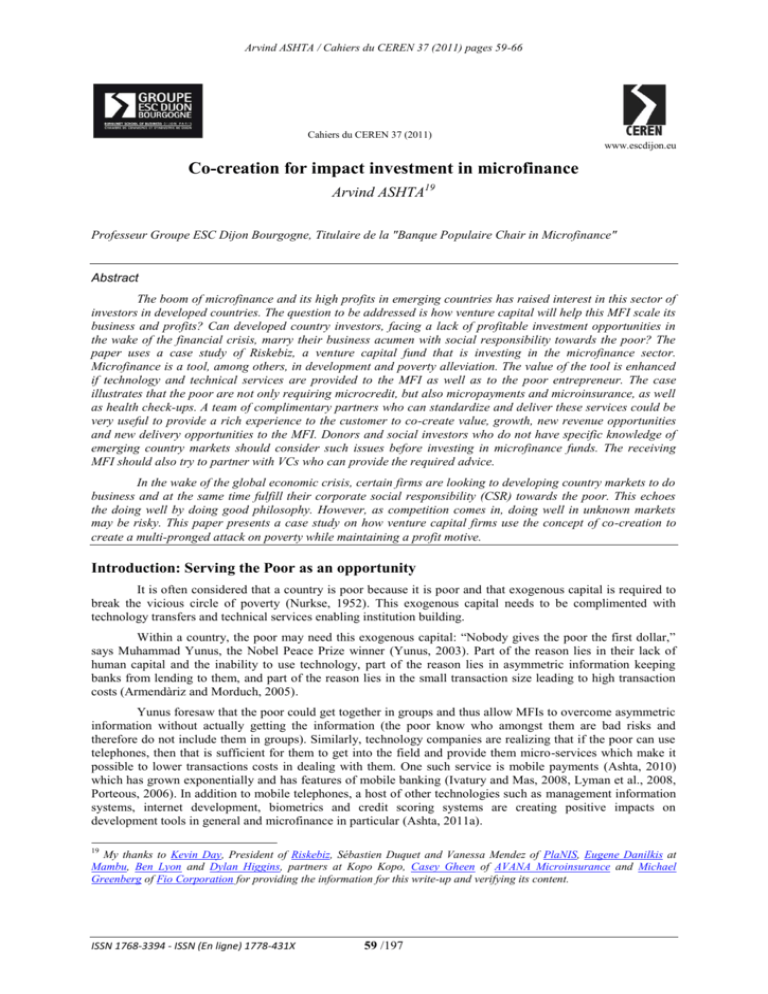
Arvind ASHTA / Cahiers du CEREN 37 (2011) pages 59-66 Cahiers du CEREN 37 (2011) www.escdijon.eu Co-creation for impact investment in microfinance Arvind ASHTA19 Professeur Groupe ESC Dijon Bourgogne, Titulaire de la "Banque Populaire Chair in Microfinance" Abstract The boom of microfinance and its high profits in emerging countries has raised interest in this sector of investors in developed countries. The question to be addressed is how venture capital will help this MFI scale its business and profits? Can developed country investors, facing a lack of profitable investment opportunities in the wake of the financial crisis, marry their business acumen with social responsibility towards the poor? The paper uses a case study of Riskebiz, a venture capital fund that is investing in the microfinance sector. Microfinance is a tool, among others, in development and poverty alleviation. The value of the tool is enhanced if technology and technical services are provided to the MFI as well as to the poor entrepreneur. The case illustrates that the poor are not only requiring microcredit, but also micropayments and microinsurance, as well as health check-ups. A team of complimentary partners who can standardize and deliver these services could be very useful to provide a rich experience to the customer to co-create value, growth, new revenue opportunities and new delivery opportunities to the MFI. Donors and social investors who do not have specific knowledge of emerging country markets should consider such issues before investing in microfinance funds. The receiving MFI should also try to partner with VCs who can provide the required advice. In the wake of the global economic crisis, certain firms are looking to developing country markets to do business and at the same time fulfill their corporate social responsibility (CSR) towards the poor. This echoes the doing well by doing good philosophy. However, as competition comes in, doing well in unknown markets may be risky. This paper presents a case study on how venture capital firms use the concept of co-creation to create a multi-pronged attack on poverty while maintaining a profit motive. Introduction: Serving the Poor as an opportunity It is often considered that a country is poor because it is poor and that exogenous capital is required to break the vicious circle of poverty (Nurkse, 1952). This exogenous capital needs to be complimented with technology transfers and technical services enabling institution building. Within a country, the poor may need this exogenous capital: ―Nobody gives the poor the first dollar,‖ says Muhammad Yunus, the Nobel Peace Prize winner (Yunus, 2003). Part of the reason lies in their lack of human capital and the inability to use technology, part of the reason lies in asymmetric information keeping banks from lending to them, and part of the reason lies in the small transaction size leading to high transaction costs (Armendàriz and Morduch, 2005). Yunus foresaw that the poor could get together in groups and thus allow MFIs to overcome asymmetric information without actually getting the information (the poor know who amongst them are bad risks and therefore do not include them in groups). Similarly, technology companies are realizing that if the poor can use telephones, then that is sufficient for them to get into the field and provide them micro-services which make it possible to lower transactions costs in dealing with them. One such service is mobile payments (Ashta, 2010) which has grown exponentially and has features of mobile banking (Ivatury and Mas, 2008, Lyman et al., 2008, Porteous, 2006). In addition to mobile telephones, a host of other technologies such as management information systems, internet development, biometrics and credit scoring systems are creating positive impacts on development tools in general and microfinance in particular (Ashta, 2011a). 19 My thanks to Kevin Day, President of Riskebiz, Sébastien Duquet and Vanessa Mendez of PlaNIS, Eugene Danilkis at Mambu, Ben Lyon and Dylan Higgins, partners at Kopo Kopo, Casey Gheen of AVANA Microinsurance and Michael Greenberg of Fio Corporation for providing the information for this write-up and verifying its content. ISSN 1768-3394 - ISSN (En ligne) 1778-431X 59 /197

